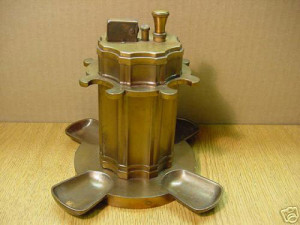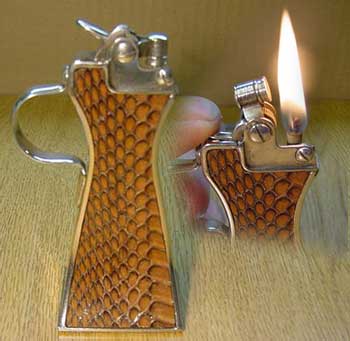
I am neither a historian of the evolution of fire making devices, nor an expert on the various intricacies of all the lighters made over the last 100+ years- rather- I am a person who required- if at all possible- that the pieces in my collection be in working order. I am a journeyman toolmaker and so over the years I made many replacement bits and pieces to put my lighters in operating condition- along the way searching constantly for original factory parts to make the repairs easier. As an avid collector would, I searched antique shops, flea markets, old jewelry and drug stores everywhere I went looking for anything related to tobacco and amassed a huge collection. With the advent of the internet my gas costs were dramatically lowered and my collection likewise increased.

When I retired a number of years ago I sold the high end pieces of my collection (lighters that is) to another private collector and also downsized the bulk of my non lighter bits and pieces. Along the way I became intimately familiar with the repair of one design in particular- the Ronson Touch Tip. When I began selling common touch tips that actually worked like they should, I became aware of the fact that even though they were made in large quantities, very few of them were still in operating condition after all this time. This brought numerous inquiries for me to repair lighters for other collectors- which I have been doing for the last 10 years or so- as I have a passion for seeing these great old pieces making fire again as they were originally designed, manufactured, sold and used! Many collectors had other makes of lighters which made their way to me over the years to be put back into operating order. You will see examples of some of these in the photo sections- from the very early Dunhill touch tips to various figural striker designs from Europe to the last petrol fueled pocket and table models that became extinct- or very close to it- by the advent of the throw-away 19 cent butanes around the 1970s.